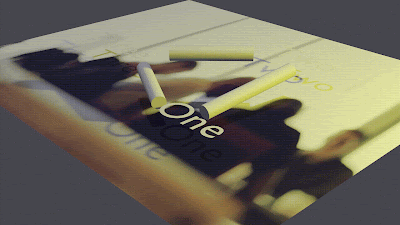Goal:
Learn to create realistic fire using Blender’s smoke simulation tools.
What You'll Need:
- Blender
(latest version recommended)
- Basic
knowledge of Blender navigation and object manipulation
Step-by-Step Tutorial
Step 1: Set Up Your Scene
- Open Blender: Start with a new project.
- Delete the Default Cube:
- Select
the cube and press
Xto delete it.
Step 2: Create a Domain for the Smoke
Simulation
- Add a Cube:
- Press
Shift + A> Mesh > Cube. - This
cube will act as the domain for your smoke simulation.
- Scale the Cube:
- Press
Sto scale it up, making it larger than the area where you want the fire to be.
Step 3: Set Up the Smoke Domain
- Select the Cube (Domain):
- Go
to the Physics Properties tab
(the bouncing ball icon).
- Add Smoke Simulation:
- Click
on Fluid, then set Type to Domain.
- Under
the Domain Type, select Gas.
Step 4: Create the Fire Source
- Add a New Object for Fire:
- Press
Shift + A> Mesh > UV Sphere. - Scale
it down to fit inside the smoke domain.
- Position the Sphere:
- Move
the sphere to the bottom of the cube (Z-axis).
Step 5: Configure the Fire Source
- Select the Sphere:
- In
the Physics Properties, click on Fluid
and set Type to Flow.
- Under
Flow Type, choose Fire.
- Flow Behavior:
- Set
the Flow Behavior to Inflow.
- Adjust
the Flow Rate (start with
around 1).
Step 6: Adjust Smoke Simulation Settings
- Select the Domain Cube:
- In
the Fluid settings, look for Cache.
- Set
the cache type to All
and specify the frame range (e.g., start at frame 1 and end at frame
250).
- Adjust Smoke Settings:
- Under
Smoke, you can tweak
settings like density, temperature, and vorticity to refine the look of
the fire.
Step 7: Bake the Simulation
- Bake the Simulation:
- Go
to the Cache section and click
on Bake.
- This
process may take a few moments depending on your settings and computer
speed.
Step 8: Lighting and Material Setup
- Add a Material to the Fire:
- Select
the sphere (fire source).
- Go
to the Material Properties tab
and click New.
- Use
a simple Emission
shader for the fire. Set a bright color (like orange or yellow).
- Adjust Lighting:
- You
may want to add a light source (Shift + A > Light > Point) and
position it near the fire to enhance the effect.
Step 9: Camera Setup
- Add a Camera:
- Press
Shift + A> Camera. - Position
the camera to frame the fire effect.
- Set Camera View:
- Press
0on the numpad to view through the camera.
Step 10: Rendering the Animation
- Set Up Render Settings:
- Go
to the Output Properties tab
(the printer icon).
- Choose
your resolution and output format (e.g., PNG or FFmpeg for video).
- Render the Animation:
- Go
to the top menu and select Render
> Render Animation.
Step 11: Save Your Work
- Export Your Animation:
- Once
rendering is complete, navigate to your output directory to find the
rendered frames or video.
- Save Your Blender File:
- Go
to File > Save As and save your project.
Shareable Visual:
You now have a fire simulation! Capture a still image or a short video of
the fire effect and share it on social media or with your peers.
Tips:
- Experiment
with different settings in the smoke simulation to see how they affect the
fire’s appearance.
- Try
adjusting the colors and strength of the emission shader to create
different fire effects.
By the end of this session, you should feel more comfortable using Blender's
smoke simulation tools, paving the way for more advanced effects in the coming
days! Happy blending!
Source:
ChatGPT






